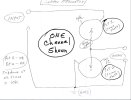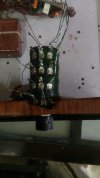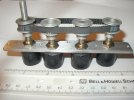Even different potentiometers have different sound quality and they are audible as well ?!?The ALPS is a carbon film type and the discussion is not about type, but is about cost vs quality. The ALPS blue velvet potentiometer are 4 times expensive compared to Potel but does not offer 4 times the quality. Rather the Potel sounds better than Alps imo.
Wow ! One keeps learning new things everyday.




